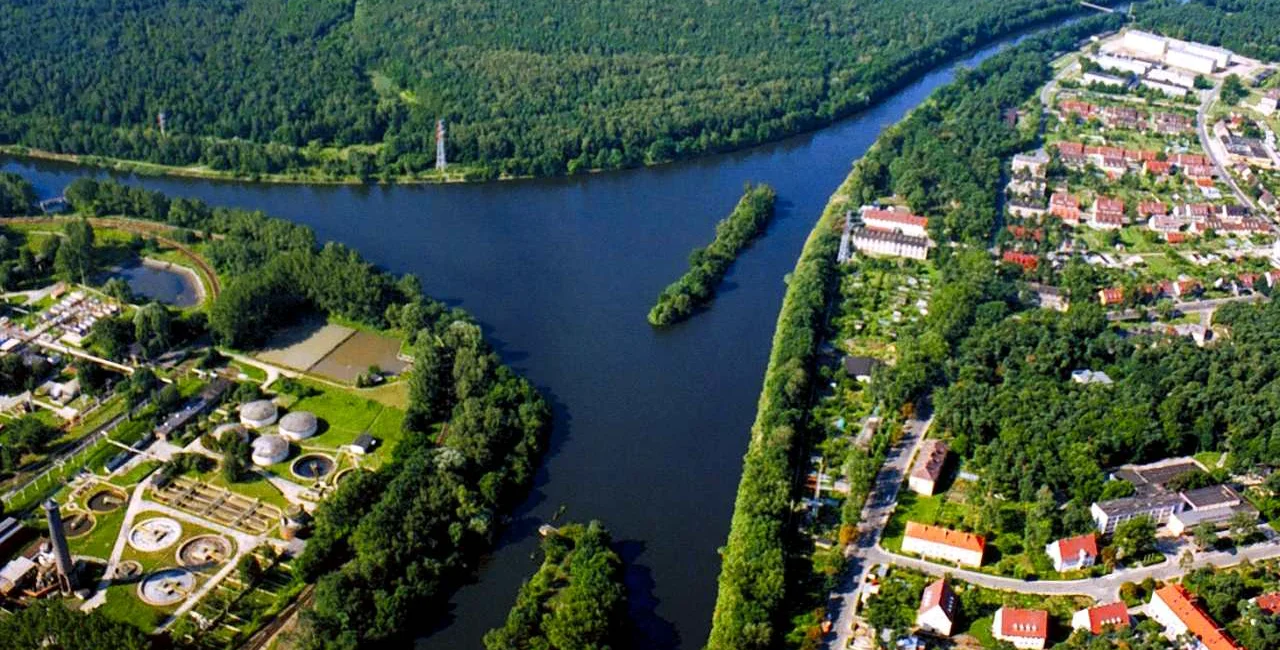The Czech government approved preparations for the first part of a Danube-Oder-Elbe canal. The section approved is on the Oder river between Ostrava and the Polish border.
The canal’s construction is being promoted by President Miloš Zeman. It is strongly opposed by the Czech Pirate Party, local municipalities and environmental groups.
Karel Havlíček (for ANO), who is both minister of transport and minister of industry and trade, announced on social media that the plan had been approved. “The joint Czech-Polish canal project between Ostrava and Kędzierzyn-Koźle, Poland, continues. The new waterway can help companies from the Silesia area with easier access to European and world markets. It will also offer competitive and environmentally friendly transport,” he said.
“The government agreed to continue the preparation of construction; we will also discuss with the Polish partners the possibilities of European financing of the project,” he added.
The first stage should cost about 15 billion CZK on the Czech side and 29 billion CZK on the Polish side. The government analysis focuses mainly on the connection of the Danube (Dunaj) with the Oder (Odra), and leaves the possibility of a connection to the Elbe (Labe) for later. Construction could begin after 2030.
The section would start on the Oder at Svinov, a town next to Ostava, and continue to the Polish border. There it would connect to the Polish part leading to the town of Koźle. On the Czech side, the construction should include the renovation of seven roads and one railway bridge, as well as two locks and the construction of a port in Svinov.
The canal’s critics critics include 56 towns and municipalities from the vicinity of the planned route. They fear that the construction and operation of the canal would have a negative impact on the groundwater. They also do not agree with the management of the corridor across their territory, which would require the occupation of thousands of hectares of land.
Municipalities would instead prefer the improvement of the road network in the area and high-speed rail.
The Czech Pirate Party said that the economic benefits of the plan are questionable, while the environmental risks are significant. Their transport expert Ondřej Polanský, who is a member of Parliament’s lower house, the Chamber of Deputies, said the plan shows the priorities of the ANO-led government.
“The first decision of the government after the regional elections is to start the construction of the Danube-Oder-Labe canal to Ostrava. Fifteen billion [CZK] drowned in the Oder: an innovative vision of a dirty river, along which cargo ships with coal from Poland sail to us,” he said.
Zuzka Klusová, the regional representative of the Pirates in the Moravia-Silesia region, opposes the plan on environmental grounds. “The government decision could mean an ecological risk on the Oder River in the Bohumín area. The only commodity that would be transported to Ostrava by water is coal: but no one will say that in that case a large coal dump would have to be built in Ostrava, another important source of dust pollution,” she said.
Dana Balcarová (Pirates). the chairwoman of the environmental committee in the Chamber of Deputies, said the project was out of step with the times. “The Czech government is spending tens of millions on more and more studies and design work. As the Pirates have long pointed out, we urgently need to invest in the revitalization of waterways, anti-erosion measures and the construction of landscape features. Instead, the government continues to waste money on centrally planned megalomaniacal projects that do not belong in the 21st century,” she said.
Environmentalists claim that the corridor would destroy the remnants of Central Europe's relatively natural ecosystems and have a significant negative impact on the country's landscape and water table.
In March 2020, environmental organizations from Germany, Poland, Slovakia, the Czech Republic and Austria sent a joint letter to the European Commission calling for the canal plans to be halted.
“The plans sound abstruse, but the governments in Poland and the Czech Republic are continuously pushing this crazy project forward and ignoring any common sense,” Olaf Bandt, chairman of BUND - Friends of the Earth Germany, said in March.
“The governments are trying to create facts. … Due to the extremely low water level of the Elbe, its construction would not benefit freight shipping, but rare river habitats such as sandy banks and softwood floodplains would be destroyed. Protected areas in Germany would be severely affected,” he added.
Other environmentalists agreed. “The Danube-Oder-Elbe Canal would swallow billions of euros, cause immense ecological and economic damage, and would not be a viable alternative for overland freight shipping. In addition, rail and the navigable Main-Danube Canal still have free capacity,” Irene Lucius, regional conservation director of WWF Central and Eastern Europe, said.
The study for the canal was also criticized at a June public hearing in the Czech Senate. Experts questioned the economic viability of the canal and pointed out the environmental risks of the project.
The original canal plan would have connected the Oder with the Danube and the Elbe. According to the feasibility study, that entire project would cost almost 586 billion CZK.
The government has decided for now to focus on connecting the Oder with the Danube, which according to the study is the most economically efficient. The connection to the Elbe was evaluated unfavorably. For the time being, the state has kept a territorial reserve for the Elbe part for a possible use in the future.
The idea of linking the Danube to the Elbe goes back as far as the time of Emperor Charles IV, in the 14th century. Serious attempts at reviving the idea occurred in the 19th and 20th centuries.












 Reading time: 4 minutes
Reading time: 4 minutes 

























